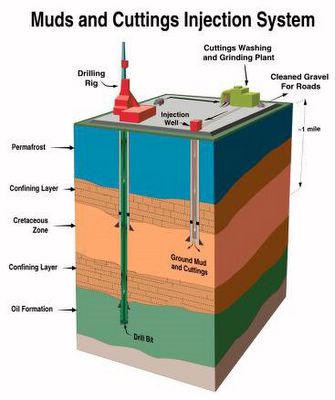
Injection Well System
Injection Wells and Percolation Ponds (click on)
However, with reactors came radioactive and hazardous wastewater. Scientists knew they needed to dispose of wastewater in a manner and place to keep them away from humans. Injection wells and percolation ponds seemed to be the solution: the waste was injected (or allowed to seep) into the ground, thus minimizing any chance of human contact. The size and location of the aquifer would, it was believed at the time, dilute the pollutants and isolate the waste for years to come. In 1953, when the first injection well was built, wells seemed to be the best solution.
Injection well at Test Area North (picture)
This well was once part of a problem, when it was used to dispose of contaminated wastewater and sewage. It is now part of a possible solution, used in a bioremediation project to inject sodium lactate into the same area.
The first injection well was constructed in 1953 at the Idaho Chemical Processing Plant now known as the Idaho Nuclear Technology and Engineering Center (INTEC). The well was used to dispose of low-level radioactive, chemical, and sanitary wastewater. Between 1953 and 1984, a yearly average of 360 million gallons of contaminated water were pumped down the 600-foot-deep injection well into the groundwater below INTEC. The well was used again in 1986, then sealed in 1989. It is the primary source of groundwater contamination at INTEC.
